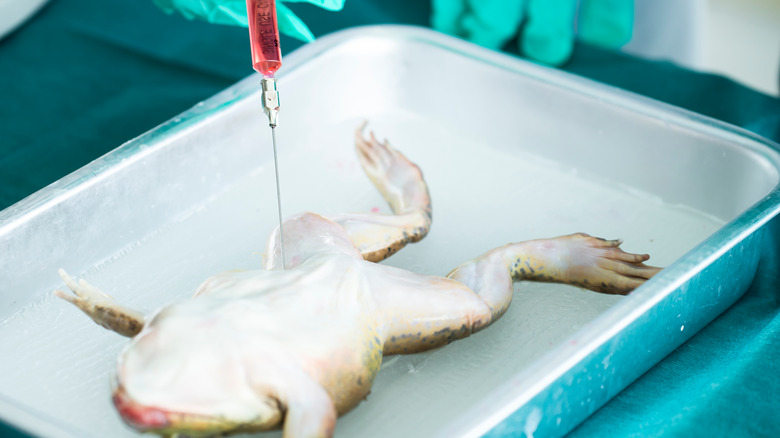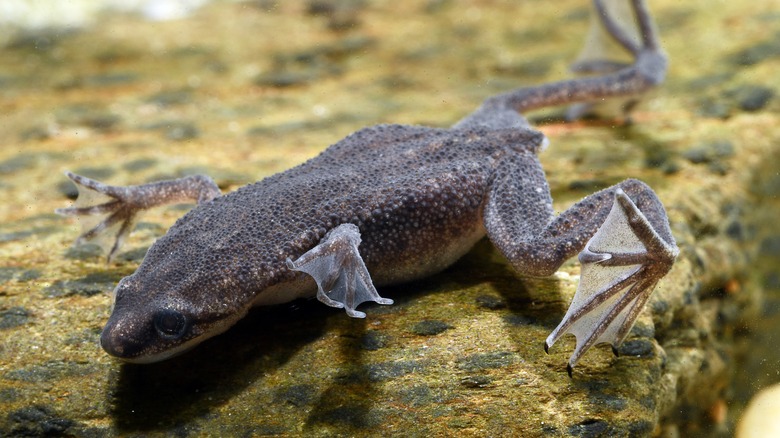Why Frogs Are Dissected In Science Class
It's a time-honored part of the experience in American schools. Eventually, just about every student in a public school in the U.S. is going to have to dissect a frog. It's almost a rite of passage, like attending prom or getting a driver's license. What's more, in the century or so since American pupils have been dissecting the critters, it's become a trope in fiction. In fact, TV Tropes has a whole article about the topic, usually in the context of a student (or group of students) steadfastly refusing to participate in the lesson on principle. Further, as The Chicago Tribune reports, it's not just fiction. Across the country, several students have refused to dissect frogs, or any animal, and have taken their school administrators to court after getting failing grades (or being threatened with failing grades) for refusing to participate.
But why do we dissect frogs in school science classes anyway? There are actually two questions here: First, why do we dissect animals in the first place, and second, why frogs?
Why we expect kids to dissect animals
Prior to the 1920s, the only people who learned anatomy via dissecting animals were medical students working on human cadavers. However, eventually the idea of learning anatomy via dissection made its way to undergraduate studies in colleges, and then high schools, and by the Roaring '20s the practice was widespread across the country (per Brittanica).
Biology teacher Susan Offner, via Carolina.com, says that students are more likely to learn anatomy from a real specimen than from a textbook. "The learning that occurs in a dissection is qualitatively different from the learning that occurs in a lecture or paper-and-pencil setting. No model, no video, no diagram and no movie can duplicate the fascination, the sense of discovery, wonder and even awe that students feel when they find real structures in their own specimens," she said.
The National Association of Biology Teachers agrees, stating that "no alternative can substitute for the actual experience of dissection," and urges teachers to be wary of handing out alternative assignments to students who might object.
OK, but why frogs?
Although the concept of dissecting frogs, as opposed to, say, coyotes or birds, is the source of this particular cultural touchstone, it bears noting that science classes across the country use different animals in addition to frogs (or in some cases, instead of frogs). For example, cats (per Orange County Register), dogfish sharks (per PBS Learning), and fetal pigs (per Penfield Central School District), among others, are also dissected.
As for frogs, Mental Floss reports that, though humans and frogs occupy completely different places on the animal map, frogs' organ systems are similar-enough to those of humans that pupils can gain valuable insight from them. Further, frogs are abundant to the point of being an invasive species in some places, have short lifespans, and are small enough to be manageable yet big enough that the students can easily see what they're looking for once they slice open the critter.
Meanwhile, the days of dissecting frogs may be coming to an end. Discover Magazine reported in 2020 that educators are concerned that the concept of dissection is possibly turning children away from STEM studies. As such, a company has developed a synthetic version of the frog that serves the same purpose, but does not require a formerly-living animal.


